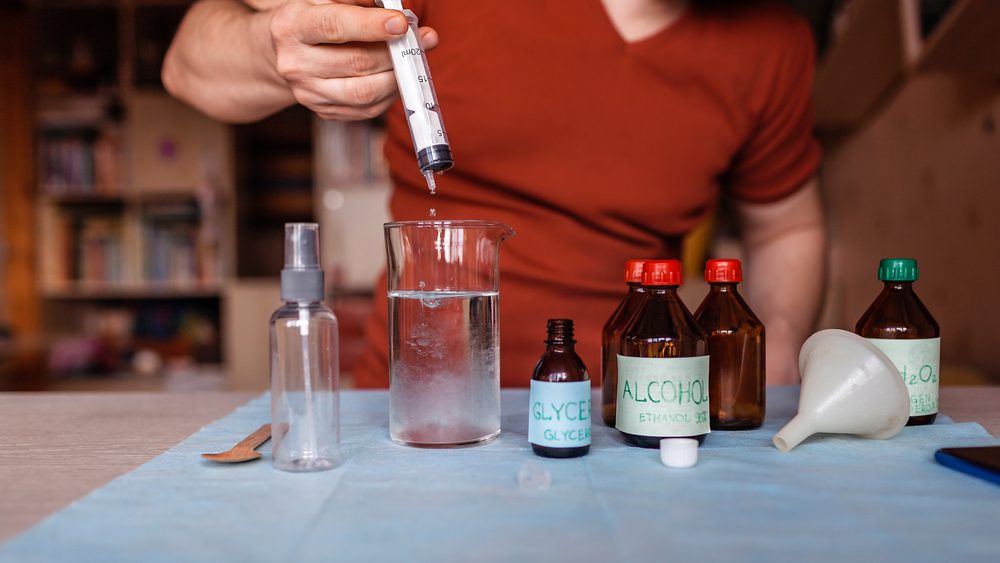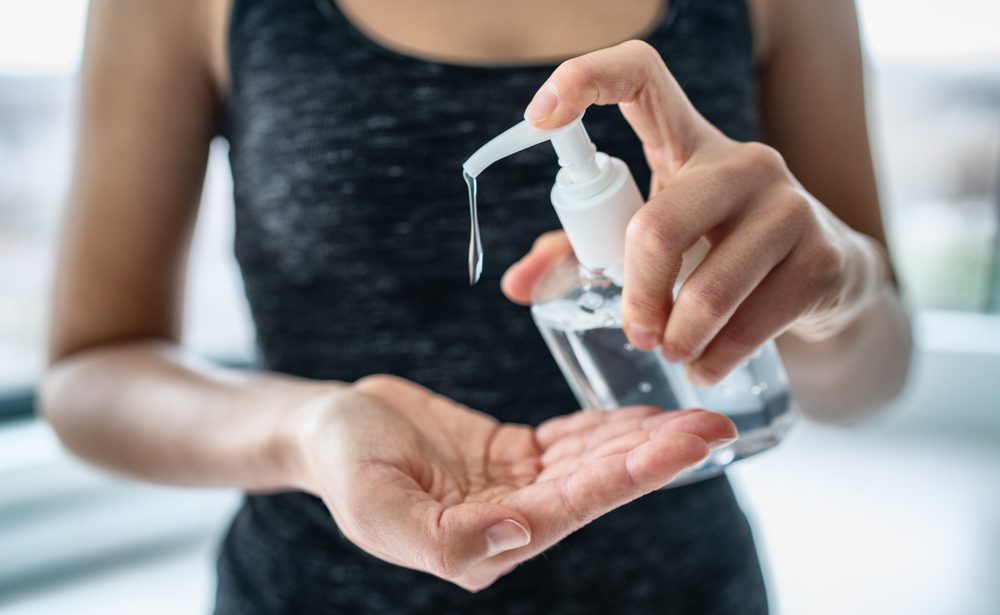With the news that the novel coronavirus (COVID-19) has arrived in the United States, many people have begun stockpiling goods to assist disinfect and prevent the spread of infections.
As the number of cases rises, many retailers run out of supplies like paper towels, water, hand soap, and hand sanitizer, leaving you without the essentials and surrounded by germs.
Hand-washing with soap and water, according to the Centers for Disease Control and Prevention (CDC), is the most effective technique to clean your hands. In the event that soap and water are not accessible, the CDC recommends using an isopropyl alcohol hand sanitizer (almost 100%) with something like 60% alcohol content.
If you don’t have access to store-bought hand sanitizer or prefer to avoid contact with the general public, you can make an excellent homemade hand sanitizer recipe to help prevent disease transmission.
What do you need to make your own hand sanitizer?
We have two recipes for you, the first one that you can create with items you probably already have, making it useful in an emergency. The second dish is more involved, but it’s simple to prepare if you shop and plan ahead of time. Another thing to keep in mind is that many of these things are quickly selling out due to great demand. You’ll have a better chance of getting them at your local drug shop, but the most important thing is to stay cautious.
- Isopropyl alcohol (rubbing alcohol) (with 99 percent alcohol volume)
- Aloe Vera gel
- An essential oil, such as tea tree or lavender oil, or lemon juice can be substituted
The Spray Recipe
- Isopropyl alcohol
- Glycerol or glycerin
- Hydrogen peroxide
- Distilled water
- Spray bottle
The aloe mixture does the job, but it also makes your skin sticky. So, based on the WHO’s recommended combination, here’s a mixture that’s less sticky and more potent.
The trick to producing an effective antibacterial hand sanitizer is to use a 2: 1 alcohol to aloe vera ratio. As a result, the alcohol concentration remained around 60%. According to the CDC Trusted Source, this is the bare minimum required to destroy most pathogens.
- In a clean place, prepare a hand sanitizer. Before you start, wipe off the counters with a weak bleach solution.
- Wash your hands properly before making Hand Sanitizer.
- Use a clean spoon and shake to mix ingredients. Before using these goods, make sure they’re completely clean.
- Ensure the alcohol in the hand sanitizer isn’t watered down.
- Mix all ingredients in a large bowl and stir until are well combined.
- Keep your hands away from the mixture until it’s ready to use.
To make a larger quantity of hand sanitizer, A formula is available from the World Health Organization (WHO) Trusted Source which required:
- Isopropyl alcohol or ethanol
- Glycerol
- Hydrogen peroxide
- Sterile distilled or boiled cold water
Warning:
While making your own hand sanitizer is simple, you should be mindful that rubbing alcohol in large volumes can harm your skin. To keep the alcohol concentration around 60%, make sure you stay to the 2:1 ratio.
You can also use gloves while mixing and sanitize your hands afterward with a hand moisturizer. And we hope it goes without saying that hand sanitizer won’t keep you from getting sick on its own. When soap and water are available, wash your hands with it, and don’t touch your face too much.

Is it secure?
Nowadays, there are many DIY hand sanitizer recipes on the Internet, but are they safe?
Professionals with the experience and resources to safely manufacture DIY hand sanitizers should use these formulas, including the formulas listed above.
Use household hand sanitizer only in emergency situations where it is not possible to wash hands for a long time.
Inadequate components or quantities can result in:
- Ineffectiveness, i.e., the sanitizer may not adequately eliminate the danger of exposure to some or all microorganisms.
- Inhalation exposure to toxic substances
- Skin irritation, injury, or burns
Hand sanitizer produced at home is likewise not suggested for youngsters. Children may be more prone to using hand sanitizer incorrectly, putting them at greater risk of injury.
What is the most ideal approach to utilize hand sanitizer?
There are two things to keep in mind when using hand sanitizer:
- Rub it on your skin until your hands are completely dry.
- If your hands are oily or dirty, wash them with soap and water first.
With that in mind, here are some pointers on how to use hand sanitizer effectively.
- Apply or spray disinfectant to the palm of one hand
- Rub your hands together vigorously. Cover the full surface of your hands as well as all of your fingers
- Continue rubbing for 50 to 60 seconds, or until your hands are completely dry. Hand sanitizer takes at least 60 seconds, and sometimes even longer, to eliminate most bacteria.
What microorganisms are killed by hand sanitizer?
An alcohol-based hand sanitizer that meets the alcohol volume criterion, according to the CDC Trusted Source, can quickly reduce the number of bacteria on your hands.
It can also aid in the destruction of a variety of disease-causing agents or viruses on your hands, such as the novel coronavirus SARS-CoV-2.
Even the greatest alcohol-based hand sanitizers, however, have limitations and do not kill all pathogens.
According to the CDC, Hand Sanitizers will not remove potentially hazardous substances. It is also ineffective against the following bacteria:
- norovirus
- Cryptosporidium, which causes cryptosporidiosis
- Clostridium difficile, refer as C. diff
Also, if your hands are noticeably dirty or greasy, a hand sanitizer may not be effective. This can occur after handling food, doing yard work, gardening, or participating in sports. If your hands are filthy or slimy, wash them instead of using a hand sanitizer.
Last but not least
When soap and water aren’t accessible, hand sanitizer is a convenient approach to help prevent the transmission of germs on the go. Hand sanitizers containing alcohol can help keep you safe and prevent the spread of the new coronavirus.
If you can’t locate hand sanitizer in your local stores and handwashing isn’t an option, you can make your own. Rubbing alcohol, aloe vera gel, and an essential oil or lemon juice are the only items required.
Despite the fact that hand sanitizers can be efficient in killing germs, health experts still urge handwashing to keep your hands free of disease-causing viruses and other bacteria.
You might also like: 9 Best Homemade Cleaners












